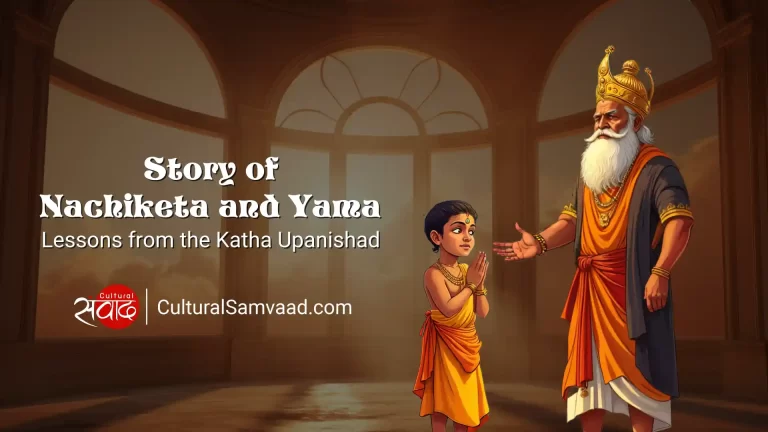
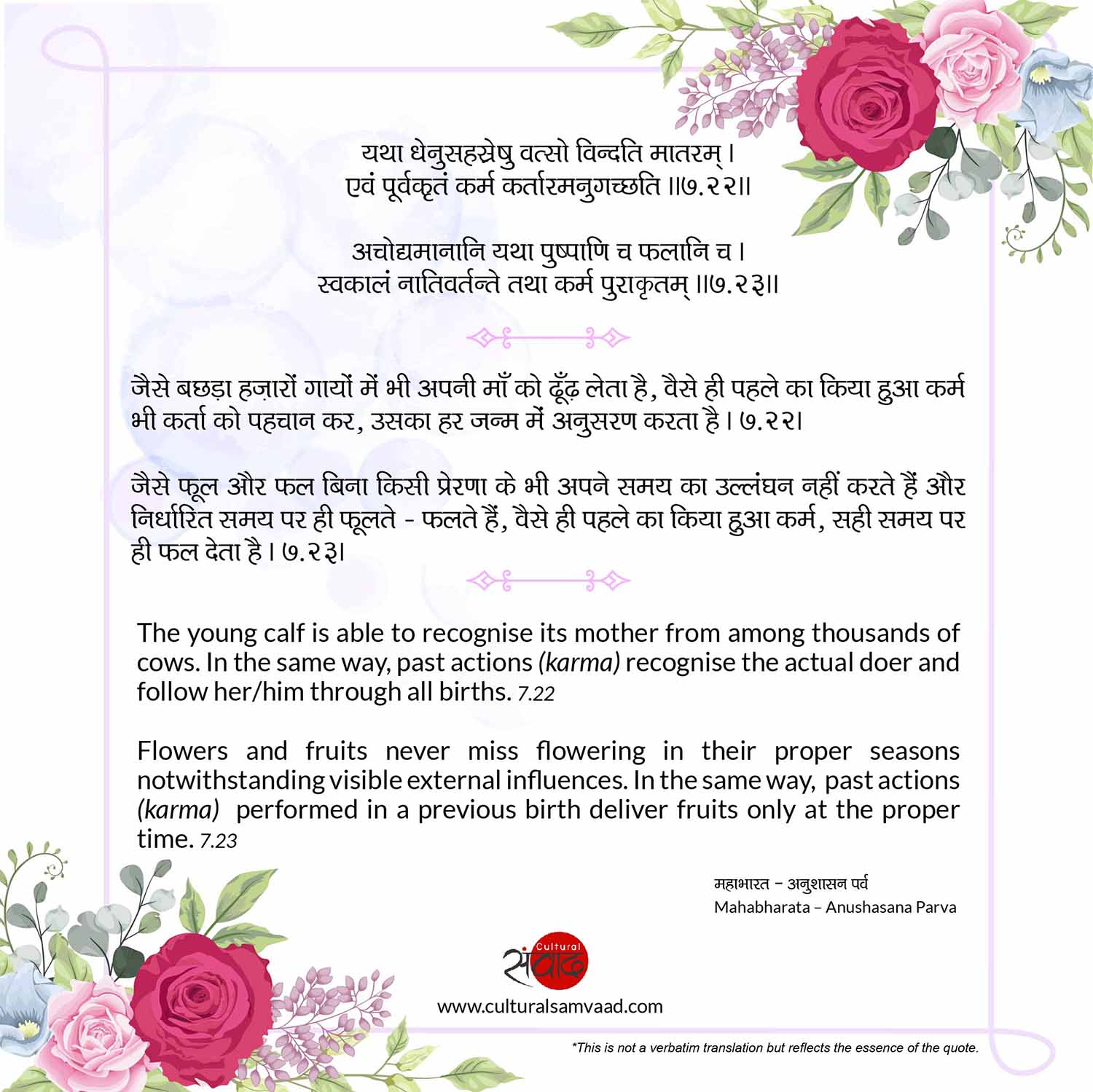
यथा धेनुसहस्रेषु वत्सो विन्दति मातरम् |
एवं पूर्वकृतं कर्म कर्तारमनुगच्छति ||७.२२||
अचोद्यमानानि यथा पुष्पाणि च फलानि च |
स्वकालं नातिवर्तन्ते तथा कर्म पुराकृतम् ||७.२३||

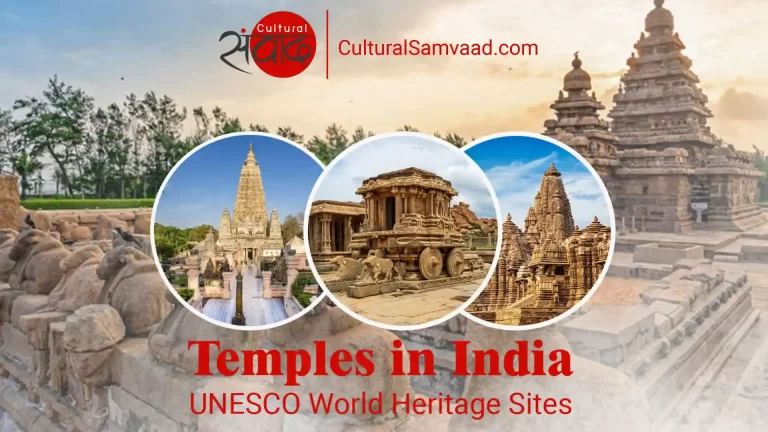
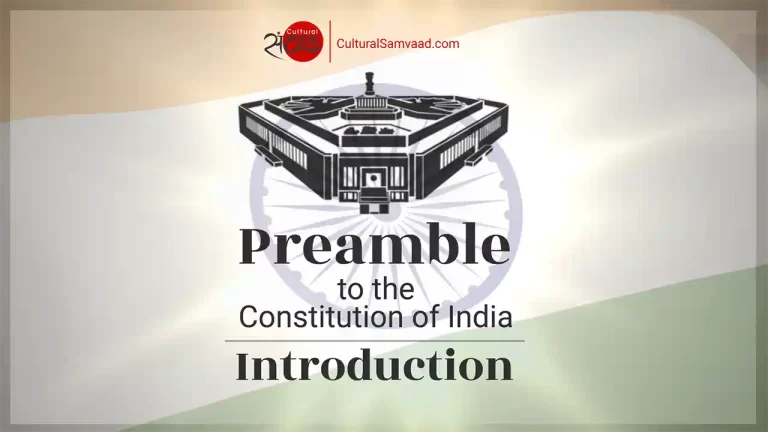
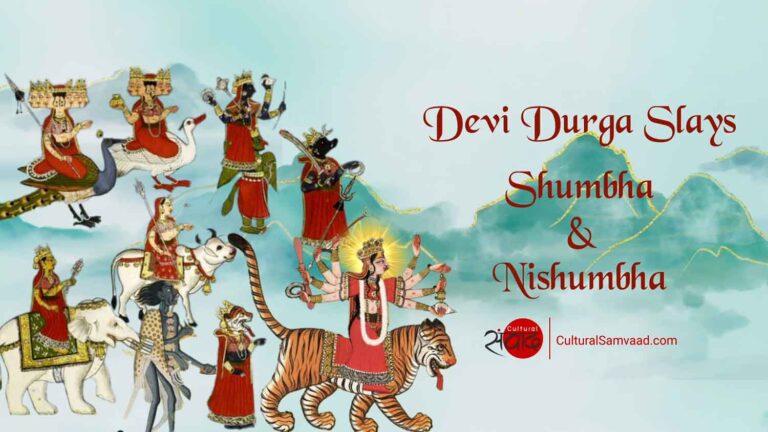
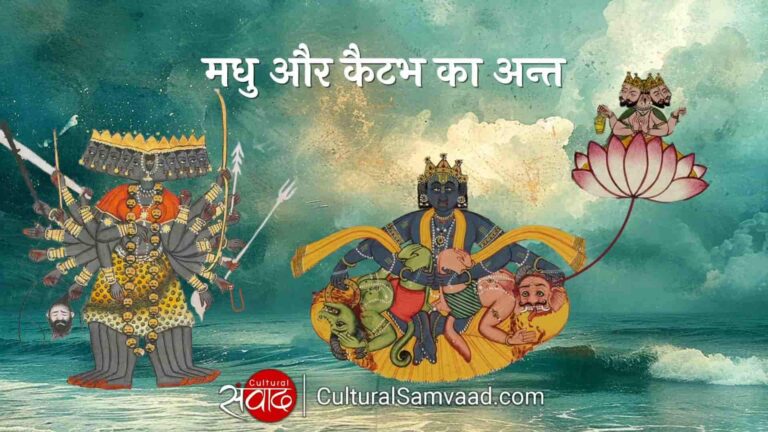
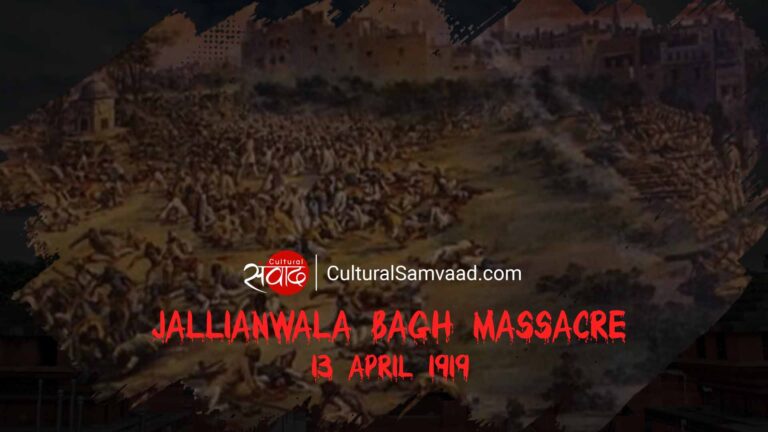
Cultural Samvaad is a platform to understand, appreciate and discuss the multi-hued fabric of India's rich and plural culture, her vast heritage, her infinite wisdom and her indomitable spirit. For our team, this is a journey of trying to re-discover unique Indian idioms which are the cornerstones of this ancient civilisation and the glorious future that beckons us.
Cultural Samvaad has been founded by Garima Chaudhry. You can reach her at editor@culturalsamvaad.com.
Copyright © 2025. Powered by Hiranya Growth Partners. All Rights Reserved.